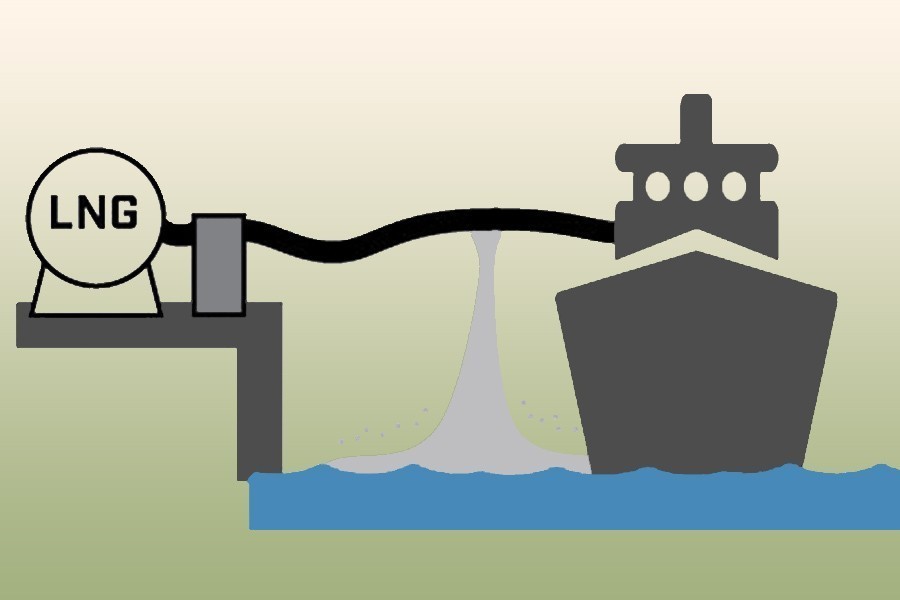Summit Group's FSRU (floating, storage, re-gasification unit) resumed re-gasification of liquefied natural gas (LNG) in a major step to ease several month-long countrywide natural gas crisis.
The FSRU, which had been out of operation since last November, re-initiated LNG re-gasification from February 28, and it is continuing re-gasifying LNG from its inventory.
Ship-to-ship transfer of LNG to the FSRU, however, is set to take place within next couple of days, said a senior Petrobangla official.
The Summit FSRU resumed its commercial operation following certification of the relevant international agency, he added.
Bangladesh's overall LNG re-gasification stood at around 531 million cubic feet per day (mmcfd) on Wednesday - totaling the country's natural gas output to around 2,858 mmcfd, according to the Petrobangla statistics.
The country's total natural gas demand is, however, around 4,000 mmcfd.
Overall natural gas output would ramp up further after re-initiating ship-to-ship LNG transfer to the Summit FSRU, which has been suspended since last November.
Gas-guzzling power plants, industries, households, compressed natural gas (CNG) filling stations, and commercial and household consumers might have a sigh of relief with the increased gas supply.
Short supply of natural gas coupled with low gas pressure affected industrial output, household cooking, and other consumers over the past several months, users alleged.
Sources said the state-run Petrobangla had to use only one FSRU of the country's total two such units since last November year, and its LNG re-gasification capacity also halved due to rupture of 'mooring line' of the Summit FSRU.
Mooring line is a specialised cable that helps tie up a FSRU with LNG- carrying vessels for smooth ship-to-ship fuel transfer.
The Petrobangla had to ration gas supplies to the consumers and the state-run Bangladesh Power Development Board (BPDB), and it relied more on oil-fired power plants to cope with the gas crisis, said sources.
A couple of dozen gas-fired power plants are now shut, as the Petrobangla could supply around 784 mmcfd of natural gas to the power plants against their total demand of 2,252 mmcfd.
Most of the furnace oil- and diesel-fired power plants were in operation to tackle the crisis.
Meanwhile, the Excelerate Energy's FSRU ran at its maximum capacity by re-gasifying around 550 mmcfd of LNG.
It had to handle around half a dozen LNG cargoes every month that arrived for re-gasification in Bangladesh from two long-term LNG suppliers - Qatargas and Oman Trading International (OTI).
It also re-gasified two LNG cargoes imported through spot market in February, the sources added.


